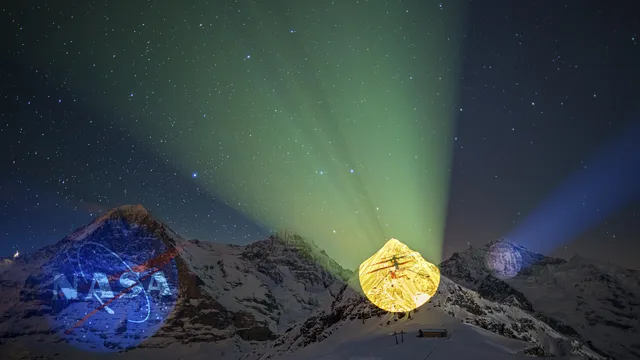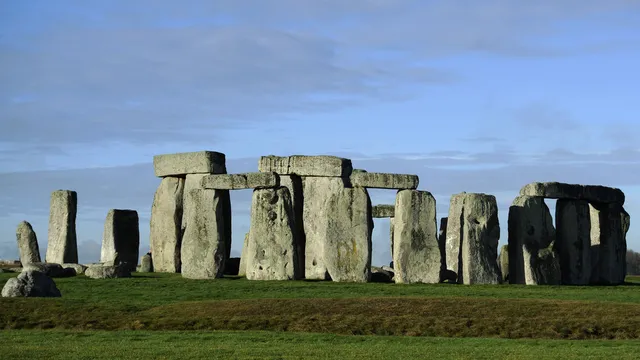The Earth had 420 days in a year, not 365. This does not mean that the Earth's orbit was longer, but that the days were shorter, so that more days could fit into the time it took our planet to complete a full orbit around the Sun, according to IFLScience. However, the year had many other numbers of days in different periods, so it is worth looking at why this is the case, as well as why the number 420 is the one most often mentioned.
The Earth's rotation is gradually slowing down, although there are short periods—such as the next two months—when it speeds up, contrary to the trend. This means that days are getting longer and there were more days in the year in the past. At the end of the dinosaur era, there were 372 days in a year. When the Earth was formed, it probably rotated fast enough to have at least 500 days in a year, and perhaps many more.
There were no sudden jumps, with 450 days in one year and 400 in the next, so over time we have gone through many numbers. Why, then, do many articles refer to 420 and not another number? We hope it is because it is 10 times the number of the meaning of life, and not for any other reason.
Before we discuss why, let's look at why days get longer.
All about the Moon
Planets rotate at very different speeds. Jupiter makes one complete rotation in 9.9 Earth hours. Venus does so in 243 Earth days (more than its year). These speeds are a result of the angular momentum of the protoplanetary cloud from which they formed. As far as we know, most of them have not changed their rotation speed since their formation, although there may be exceptions.
However, Earth has slowed down considerably, which we believe is mainly due to the Moon. Although not the largest satellite in the Solar System, the Moon is unusually large relative to its planet (especially after Pluto's demotion).
This means that it has a significant geographical influence on Earth, slowing it down.
There is a constant amount of angular momentum in the Earth-Moon system. If the Moon moves away from Earth, which it actually does, then the angular momentum increases, calculated by the formula mass x velocity x distance from the point around which it is moving. The additional distance compensates for the loss of speed, so that the Moon carries more angular momentum, which it must have received from somewhere. The only possible source is the rotation of the Earth, which must have slowed down.
The reason why the Moon is moving away is the tides, both those we observe in the oceans and the smaller tides that the Moon causes in the Earth's crust. The Moon's gravity pulls the Earth toward itself, causing a bulge. However, friction creates a delay, which means that the bulge is slightly offset from the Earth-Moon axis. With its offset axis, the Moon exerts a torque on the bulge it has created, slowing down the Earth and pushing itself away.
The lost days
Since the Moon has been with the Earth almost since its formation and has been slowing it down all this time, we have had many days of varying lengths. However, it is not easy to calculate how many days there were at any given moment in Earth's history. For at least half of Earth's life, we can only guess.
Some researchers have calculated that 1.4 billion years ago, the day was about 18 hours long, which means that the year was 490 days long. However, their methods assume that the processes lengthening the day were relatively constant.
More recent studies dispute this. They argue that between 2 and 1 billion years ago, the Earth's rotation barely changed, which the authors attribute to the influence of the Sun, which accelerates the Earth's rotation through the atmosphere, counteracting the slowing caused by the Moon. If this is true, during this enormous period of time, the Earth's year was about 460 days long.
Rather, corals helped us. Like trees, the growth of many corals coincides with the seasons. This leaves traces of differently colored seasons of growth, similar to the annual rings of trees, which allow us to determine their age. Within this, however, some corals in shallow waters also record the high and low tides, as well as the sediments to which they are exposed.
In 1963, Professor John Wells of Cornell University published a revolutionary article on fossil corals from the Middle Devonian period, 380 million years ago, reporting a 400-day year with a deviation of about a week.
Others followed Wells' work and found that during the period 444-419 million years ago (Silurian period), this figure was between 400 and 420 days. This makes sense: if the number of days became longer the further back in time we go, then around 40 million years before Wells' estimate, it must have been in this range. The upper limit of this estimate has often been cited on the internet.
If this is the case, then before the Silurian period, days were even longer, but without many ways to measure them, we don't know how much longer. So the figure 420 has become established in popular debate as the longest we have from the distant past.
However, not everyone agrees with this. In 2000, Dr. George Williams of the University of Adelaide published an article in which he used the same technique on a much older sample of coral to arrive at a figure of 400 days, 620 million years earlier. As he points out, this contradicts the work of Wells and even more so the figure of 420 days from about 200 million years later, and he explains why he thinks he is right and they are wrong. Williams also uses some different techniques to arrive at approximate estimates of 466 and 514 days, 2,450 million years. As you can imagine, with such different estimates, not everyone is convinced by his conclusions.
Since qualified scientists have reached conflicting conclusions, there is no clear and definitive answer, and no one can be said to be right. Everyone (except flat-Earthers and young-Earth creationists) agrees that the days were shorter, so at some point in the year there were 420, and also 400, 450, and probably 500. When exactly that was, we will leave to others to decide. |BGNES

 Breaking news
Breaking news
 Europe
Europe
 Bulgaria
Bulgaria







